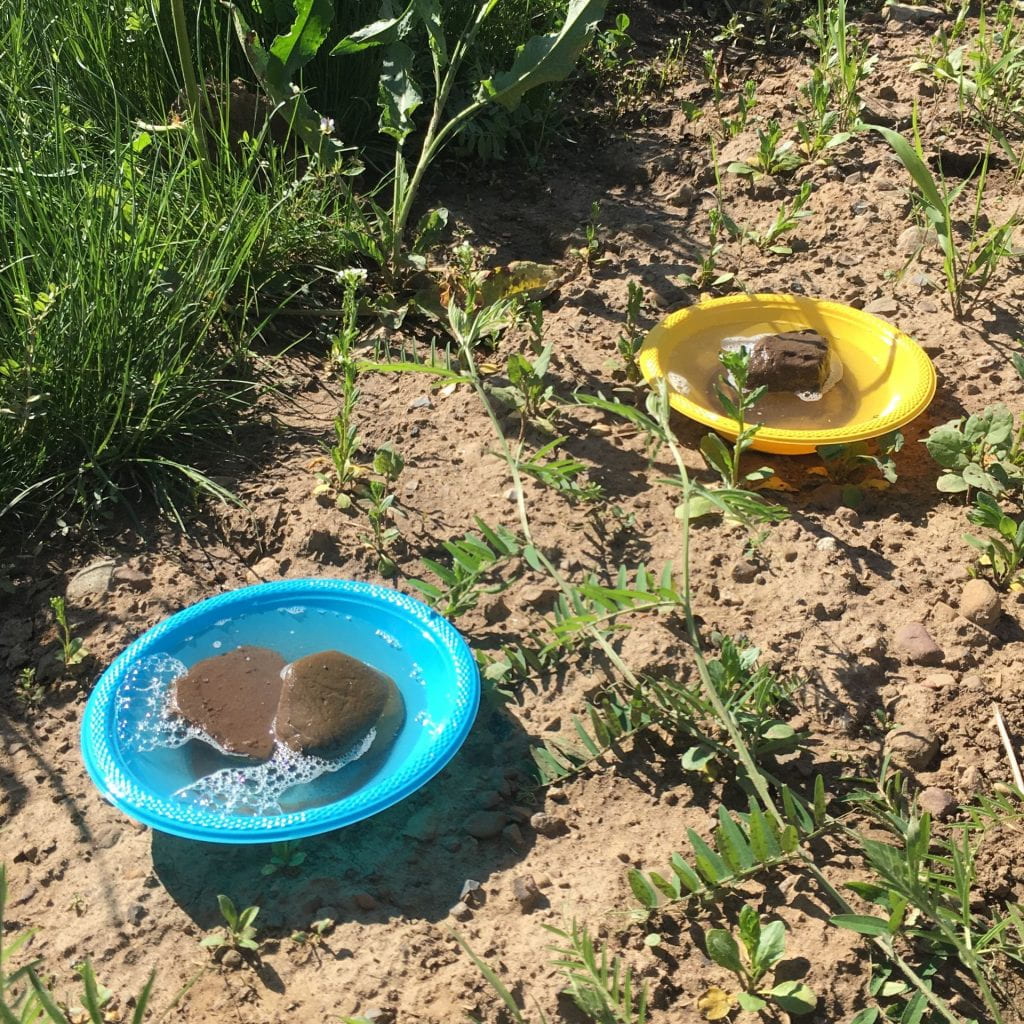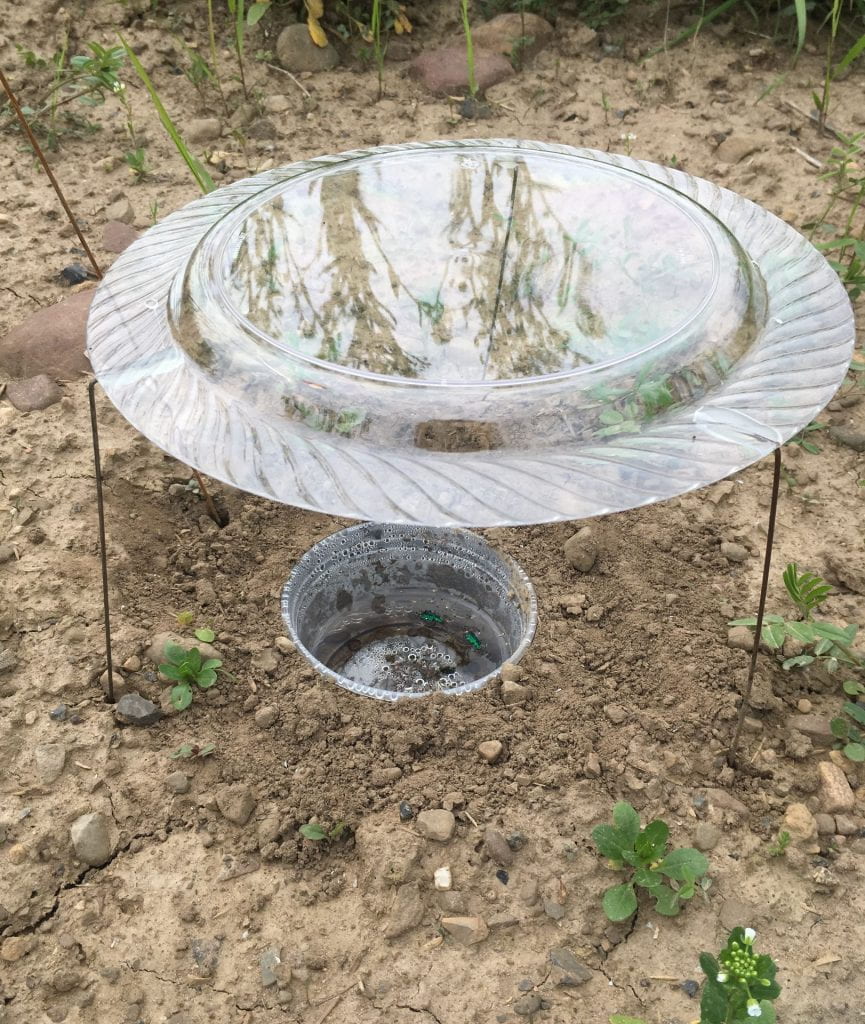
Last year I introduced you to the research field at Cornell AgriTech in Geneva, NY where Dr. Betsy Lamb, Brian Eshenaur and I are studying and demonstrating Christmas tree IPM. One part of this project is using perennial wildflowers to attract natural enemies of pests as part of an IPM strategy. The wildflowers (and some perennial grass) species were chosen because of the food and shelter they provide to pollinators. These same resources should make them useful to natural enemies of pests, too.

By the end of our first field season, we had started using six different methods to establish wildflowers as habitat for beneficial insects (plus a weedy mowed control treatment). We also collected data on how much time and money we spent on establishment and how successful our weed management was. You can read about results from Year 1 in my post from last November.
But beneficial insect habitat establishment is not a one-year project. The establishment methods we started to implement in 2018 are ongoing, including periodic mowing of direct seeded plots, and hand-weeding of transplanted plots. We’ll keep track of how much time and money we invest in these plots in 2019, too.


And we want to know whether these plots are actually attracting beneficial or pest insects. So, in 2019 we are starting “Phase II” of our beneficial insect habitat work. We want to know which and how many insects (and other arthropods, like spiders) are being attracted to each type of plot. We will also count insects in no habitat plots (weedy, mowed occasionally) and mowed grass plots in the middle of the Christmas tree field for comparison.
Insect collection began in early May, and we are using four different techniques:
- Sweep net – This is what it sounds like. We “sweep” a net through the air above the ground to capture mostly flying insects, or those who may be resting on the plants.
- Butterfly and moth count – We walk through the field, counting how many of each butterfly or moth species we see in each plot.
- Pan traps – These are bright yellow and blue bowls filled with soapy water. One bowl of each color is placed in each plot for 2 days, then we collect the insects that have been attracted to the colorful bowls and were trapped in the soapy water. This method will help us count flying insects, especially bees and wasps.

Bright blue and yellow bowls filled with soapy water and weighed down with rocks will attract certain flying insects. By counting insects collected in these pan traps, we can learn which insects are spending time in each plot. - Pitfall traps – These are clear plastic 16-oz deli cups (like you might use for take-out food) that are sunk into the ground in each plot. Insects that crawl along the ground fall in. We will use this method to count mostly ground-dwelling insects.

A pitfall trap collects ground-dwelling insects. This one is protected by a rain cover. We didn’t want all the rain we’ve been getting this spring to overflow the traps and wash away the insects we caught!
I will write another blog post or two about this project during or at the end of this season. If you want to see more frequent updates, follow me on Twitter (@AmaraDunn). I’ll post weekly pictures of this project, including which beneficial insect habitat plants are blooming each week. You can also see lots of pictures from this project on Instagram (biocontrol.nysipm).
This work is supported by:
- Crop Protection and Pest Management -Extension Implementation Program Area grant no. 2017-70006-27142/project accession no. 1014000, from the USDA National Institute of Food and Agriculture.
- New York State Department of Agriculture and Markets
- Towards Sustainability Foundation
